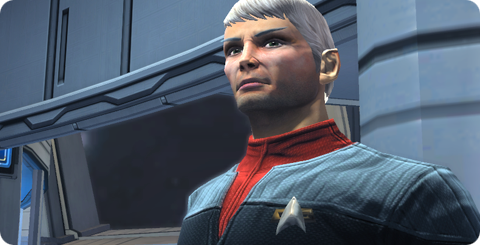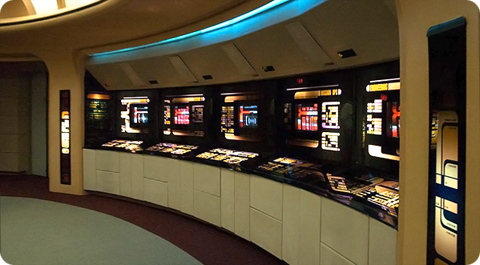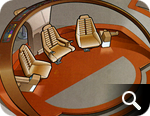
Thanks to Erica, I’ve been playing Star Trek Online since closed beta. The game has evolved and improved since that initial release, but overall I’ve been able to get a solid understanding of what it takes to have fun and play well in the universe that Cryptic Studios has created these last two months. The game officially launches in just a few days and I thought I would take a moment to share with you some quick and dirty tips and tricks that will help any new player function effectively in STO. I wish something like this had been available when I started playing World of Warcraft back in 2004. As I learn more I’ll be updating this post with new tips and things to watch for. I hope it’s helpful.
• Playing on a Mac: Although Star Trek Online doesn’t officially have a Mac version, you can certainly play it on one. You’ll need a copy of Boot Camp running either Windows XP SP2 / Windows Vista / or Windows 7 (32 bit). I don’t recommend playing STO using Parallels on a Macintosh, running in emulation mode is too slow. I don’t know how fast your Mac needs to be in order to run the game well in Boot Camp, but obviously the faster the better. I’m running on a 2.8 GHz Intel Core i7 iMac with 8 GB of RAM and the game purrs like a space kitten. TUAW has a great illustrated guide on how to install Win 7 on Boot Camp, check it out.
• Before You Buy: Some special in-game equipment and abilities can only be obtained by ordering the game through a certain retailer. If you order the Deluxe Collector Edition for instance, you’ll get access to Next Generation & movie era uniforms and more. Cryptic offers a complete list of retailers and what you get when you order from each of them. Do your research before you purchase.
• Take Your Time: Customize the appearance of your character at creation. Changing physical attributes, the look of your uniform, etc after your character has been created costs “money” in Star Trek Online in the form of energy credits. The same goes for crew members you recruit.
• Use Your Map: Pressing the “M” key in aboard ship, in spacedock or on a planet displays various types of maps. Before shouting out “where is so-and-so” take a look at your map first, it will often display what you’re looking for. FYI, at Starfleet headquarters, Sulu is in the Admiral’s office.
• Linking Items: You can easily link in-game items you pick up in chat by control-clicking on them.
• Item Rarity: Energy credits can be earned by selling items in your inventory. The more uncommon an item, the more it’s worth. Items in Star Trek Online follow a similar path as those in Warcraft. White: Standard issue, Green: Uncommon, Blue: Rare, Purple: Epic. I don’t know if there are colors beyond purple or even what they’re called yet.
• Loot System: Loot “drops” when certain ships are destroyed, usually the last ship in a squadron. If loot is available to pick up, you’ll see a glowing, floating orange pylon in space or an orange sphere in ground missions. Unlike Warcraft, loot in Star Trek Online is only available to a specific player, so don’t be afraid to pick it up by pressing “F” when you see it.
• You’re In Charge: Don’t forget about equipping your crew as you progress. Those under your command will not pick up loot and equip themselves, so it’s important that you do so for them. A low-level shield may not be useful to you, but could be just what your science officer needs to keep from being sent to sickbay every away mission. Be sure to examine everything before selling it.
• Instances: As of this writing there are no “realms” in Star Trek Online. The game is played on a single, massive server for everyone. There are however, instances within this server. So you can be talking to someone in zone chat who’s at the same location you are and not see them floating in space next to you. You can change instances by clicking on the small downward pointing arrow in the upper right of your HUD.
• Powers: As soon as you get your own ship and are floating above Sol Spacedock, press “P” and open the available list of powers. Drag and drop the shield power management controls into your HUD so you always have access to them during battle. Throwing power to a particular shield has saved me more times than I can count in Star Trek Online.
• Emotes: Click the little Starfleet badge icon in the corner of your chat window to list all of the emotes your character can perform. I especially love the “Tug”, “Dance: Robot” and “Prosper” emotes.
What about you? Do you have tips and tricks for Star Trek Online that other players can benefit from? If so, please leave them in the comments of this post and I’ll add the best ones to the list. Thanks and feel free to add me to your list of in-game friends, I’m Kodos@Gedeon.


